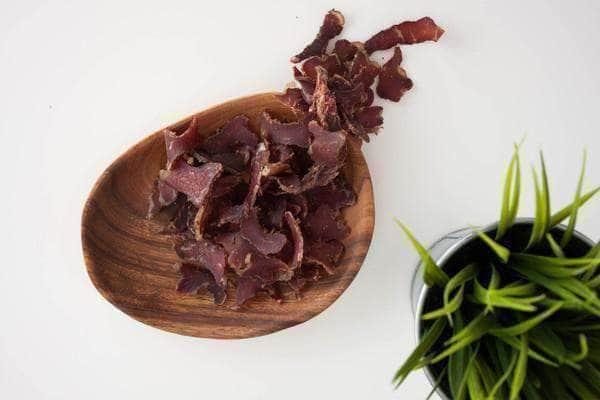
The paleolithic diet – or paleo diet – is a diet trend based off of foods that were eaten by Paleolithic humans. When humans relied on the hunter-gatherer lifestyle, long before the agriculture revolution, and today’s trend of highly processed foods.
The paleo diet includes vegetables, fruits, nuts, roots and meats. The diet excludes dairy products, grains, sugars, processed oils, salt, coffee and alcohol.
The diet was started as a way to promote overall health, and in recent years has grown in popularity, with many people latching on to this new – or rather reestablished – way of life. There are many benefits to adopting a lifestyle that is low in sugar and carbs and high in protein.
One way in which the paleo diet has been broken down is as follows:
- 55% of daily calories from seafood and lean meat
- 15% of daily calories from fruits, vegetables, nuts and seeds
- Avoidance of all foods that the diet excludes.
How biltong fits in
Biltong can be made from a variety of different meats, which means that you can alter which types of meat you’re eating in your diet. For example, the paleo diet encourages a balance between lean meats, seafood and red meats. With biltong, you can switch between using chicken, fish and beef, making it a versatile snack for your diet.
Because of the importance of protein within the paleo diet, biltong is the perfect snack or addition to a meal for those who follow it. A 100g serving of biltong contains almost 60 grams of protein, where 94% of that is digestible, meaning your body will absorb almost all of it. Besides an impressive amount of protein intake, biltong is also packed full of other vitamins and nutrients, making it a beneficial addition to those following a healthy, paleo lifestyle.
Head over to our online store to buy some for yourself and start reaping the benefits of this healthy and delicious snack!
